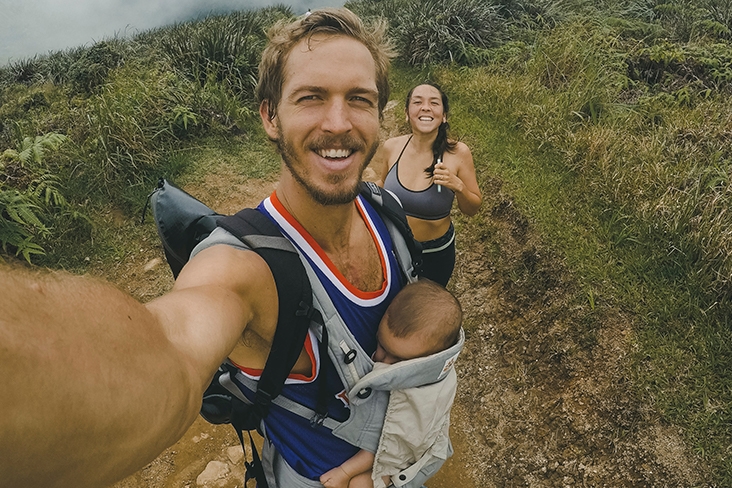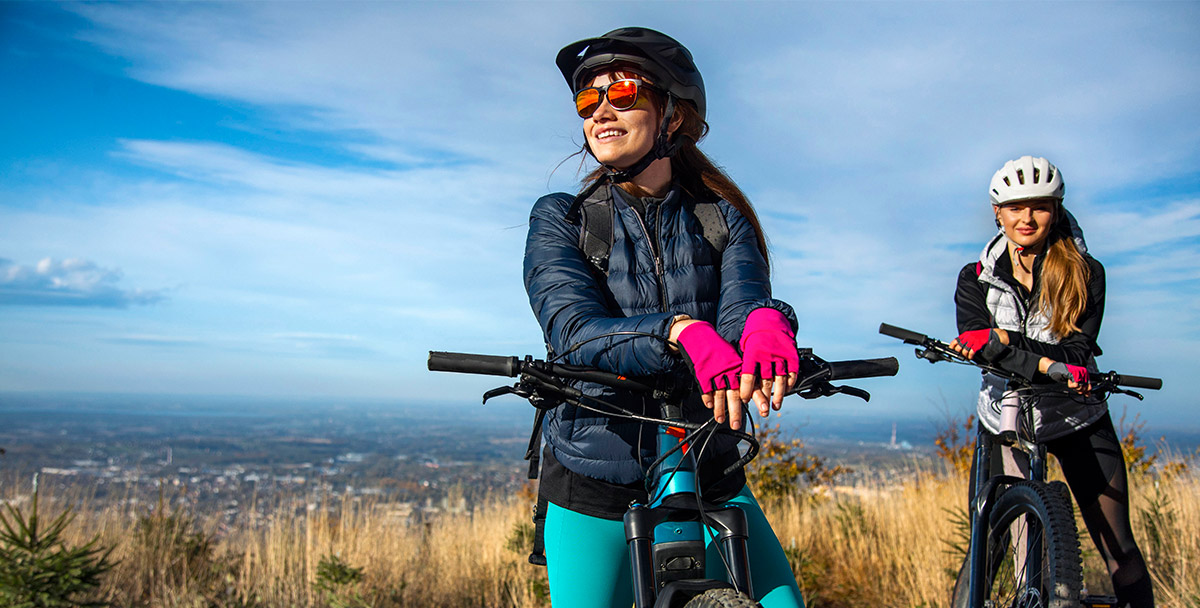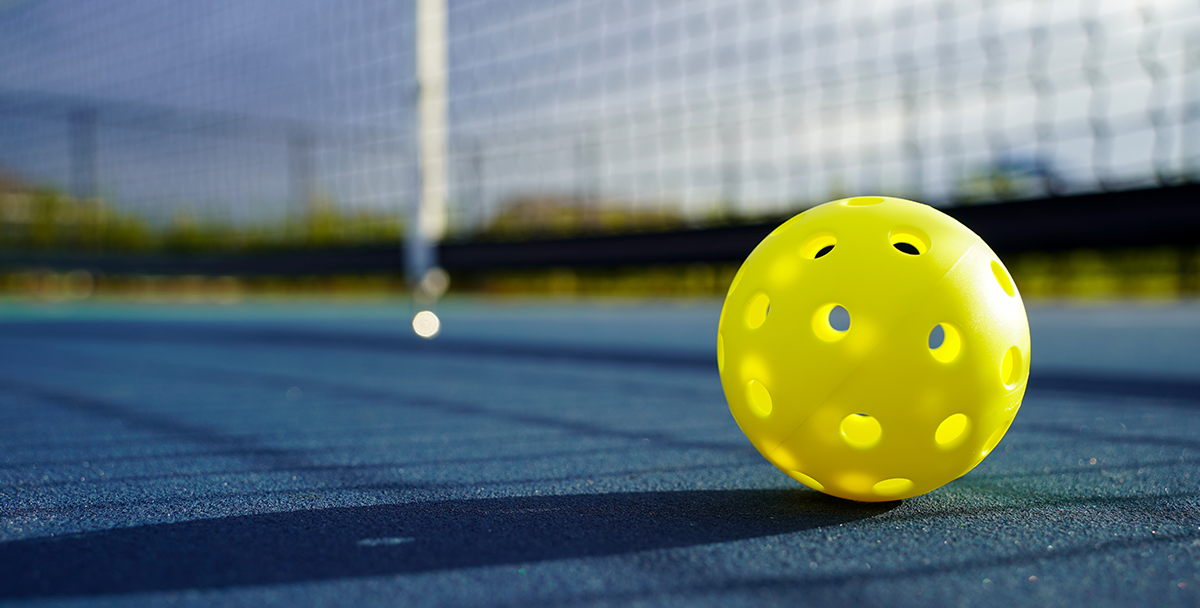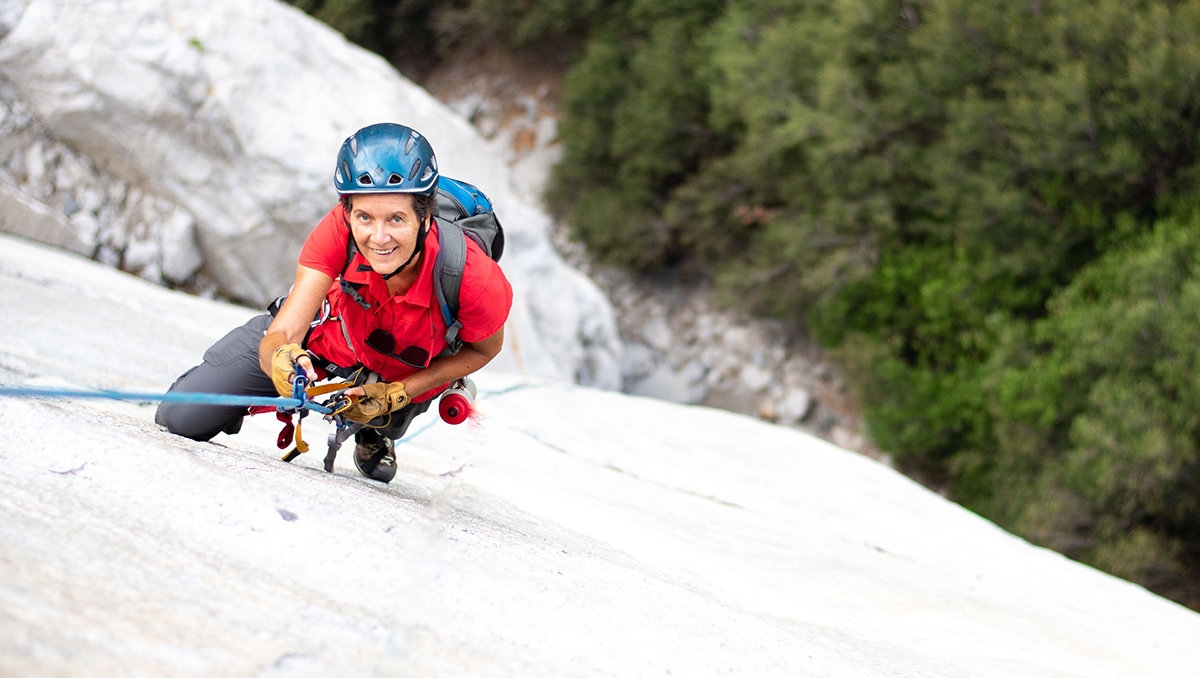“Mama, it’s pony!” exclaimed my daughter, Elle, as she wrapped her tiny hand around my ponytail to demonstrate its usefulness as pseudo horse reins to control the direction of my face. Her voice interrupted the birds chirping around us. Elle was 2 years old, and we were just an hour into a three-day backpacking trip on the Ozette Triangle in Washington’s Olympic National Park.
“Remember when she was a baby and just kinda sat there the whole time?” I said to my husband, who shouldered a monstrous backpack a few feet in front of me. I loved showing our daughter our favorite wild places, but I never knew what I’d get when we put foot to trail.
Before Elle was born, I felt confident in my outdoor capabilities. I scaled mountains, paddled whitewater and spent countless nights in a tent, mesmerized by the twinkling stars shining brighter from the backcountry. But after her birth, I quickly realized our new trio needed to relearn how to do our favorite activities, adapted for a small human who literally could not care for herself.
We started early. When Elle turned 5 months, we took our first overnight backpacking trip. By the time she was a year old, our daughter had logged more than 100 nights in a tent.
I’m often asked if it’s all worth it – the physical labor, the sleepless nights and the emotional stress that come with lugging a child into the backcountry. My answer is always the same: There is no greater joy than sharing your favorite spaces with your favorite people.
Is backpacking with your young children on your wish list? I’ve rounded up wise advice from outdoor experts and parents around the country who regularly hike and camp with kids from as young as 3 months to as old as 10 years. (For tweens and up – I’ll report back when Elle is a little older.) See you on the trail!
How Soon Can I Start Backpacking With My Kid?
I’ve heard of intrepid parents successfully car camping with babies who are just a few weeks old, but many choose to wait until their child is at least 3 months before attempting a backpacking trip. Especially if you’re a first-time parent, this gives you time to get a handle on your new responsibilities – feedings, diaper changes and the like – before you take the show on the road.
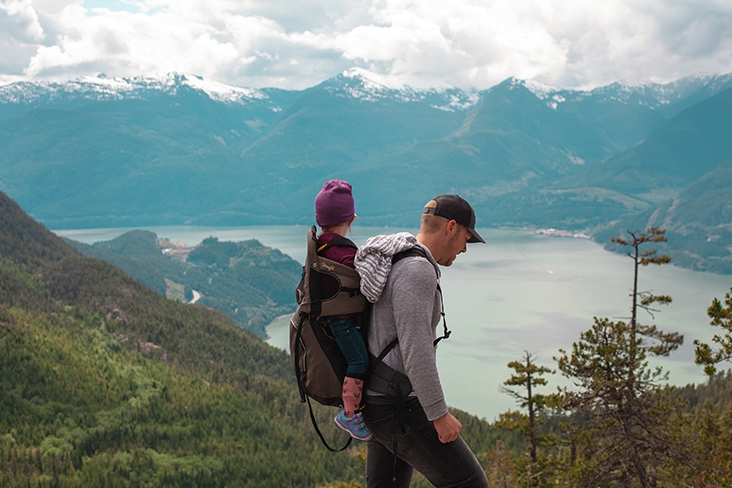
There are no official guidelines for what age it’s safe to start taking your child backpacking, but there are important safety considerations to keep in mind if you’re planning a trip with an infant:
American Academy of Pediatrics guidelines warn against co-sleeping with infants due to the risk of sudden infant death syndrome. A travel crib is easy to toss in the car but much harder to hike with, considering you’ll also be lugging supplies and a baby. (See the “What Should My Kid Sleep On or In?” section below for a few suggestions of lightweight travel cribs that meet Consumer Product Safety Commission standards.)
Limit camping with an infant to warm climates. Babies lose heat quickly and shouldn’t spend the night outdoors if temperatures are going to drop below 50 degrees Fahrenheit, per Seattle Children’s Hospital.
Other factors to consider include:
Your experience level. If you’re new to backpacking, you may not be ready to bring a very young child along.
For moms: If you’re still recovering from labor, don’t push yourself too hard. Listen to your body.
How Do I Choose the Right Trail?
It’s always a good idea to include your child in the trip planning once they’re old enough to voice opinions. “It gives them ownership and shows you value their ideas on how they’d like to get out and do things,” says Zenovia Stephens, founder of the Alabama-based Black Kids Adventures, Inc.
Then, start small. Your family’s first backpacking trip is not the time to choose a life-list trail with thousands of feet of elevation gain. It’s ideal to choose a trail that can be accomplished in a single overnight. That way, you can always bail and make it back to the car if things go sideways. It’s also good to be close to civilization in case you need a hospital.
I also suggest finding a trail that is relatively close to home so that you can minimize time on the road.
Beyond those basic parameters, selecting the best route for your adventure will vary depending on your child’s age.
Younger Than 3
This is often the easiest age for first backpacking trips since your kid is still portable. You will likely be carrying them for the entire trip, so you can choose a route without the X-factor of how many miles a little one’s legs can handle.
Still, it’s important to be realistic about your own physical limitations with the addition of a kid strapped to your front or back. You’ll probably want to shave some mileage and/or elevation gain off your typical max.
Ages 3-6
This is one of the toughest ages because your child is mobile and wants to walk. Limit daily distance to a mile or 2, and make sure the terrain is fairly flat to prevent stumbles.
Ages 6-10
This is your sweet spot. Your kid is old enough to feel a sense of pride over tackling a big goal, so work with them to choose a trail with a destination that validates their sense of accomplishment. But cap daily distance at 3 to 4 miles. Remember: You want it to be fun!

What Type of Kid Carrier Should I Use?
There are two ways to carry your child: a kid carrier backpack or a soft front carrier. If your child is 3 or younger, you will need one of them.
Front Carrier
These soft carriers are designed for babies who don’t have full neck support yet and cannot sit up on their own. Parents can pair a front carrier with a traditional backpack to hold gear. For a hike, look for a soft carrier with some structure for better ergonomic support.
I like the Ergobaby™ Omni™ Breeze, which offers four ways to carry your baby: facing in toward your chest, facing out toward the world, on your hip or even on your back. Tula® is another popular brand. Pack a sun hat for your baby, since front carriers typically don’t have sunshades.
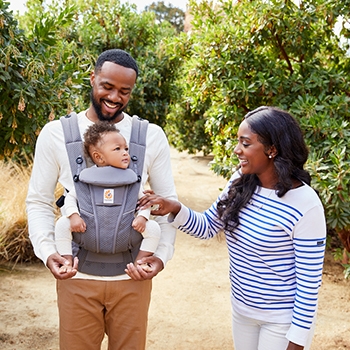
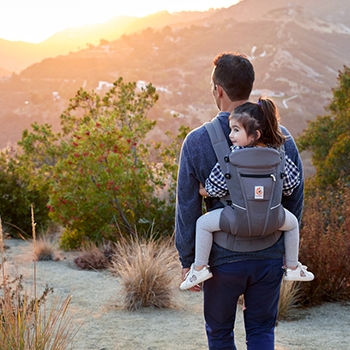
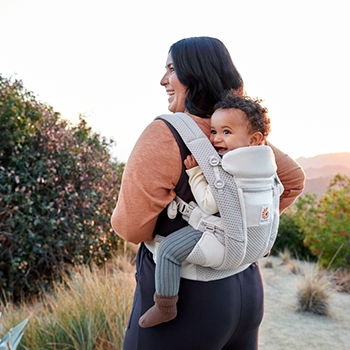
Kid Carrier Backpack
Once your baby weighs at least 17 pounds and can sit upright without assistance, they are ready to graduate to a kid carrier. These hiking backpacks hold your child and a small amount of gear, making it easier to get outside.
Look for one with a hood that can protect your child from sun and rain. Osprey®, Deuter and Kelty® are popular brands. Most child carriers have a maximum weight of 40 pounds, so while they are pricey, you can typically use them until your child is at least 3 years old.
What Food Do I Pack for My Kid?
Food is critical to a successful first adventure. Your meal plan will look a little different depending on your child’s age.
Babies
In this age bracket, you have one of two options: breastfeeding or formula feeding. If you’re nursing, that will make your pack lighter. Parents who are formula feeding may feel discouraged since it looks like a lot more work, but I promise: It’s possible.
I supplemented with formula for Elle, and we managed many backpacking trips. Packing powdered formula is more practical than lugging liquid. You can mix it using the water from your own hydration bladder, assuming you haven’t added electrolytes or any other additives.
If you’re in the backcountry for a while, you’ll need to bring a filter to purify water from a moving stream or lake. If you want to double down on purification, feel free to boil the water on your camp stove for a few minutes – just be sure to let the liquid cool before feeding.
Bring a few extra bottles, a bottle brush and biodegradable soap to clean the bottles.
Toddlers and Older
Once your child begins eating real food, pack items you know they’ll want to eat, even if that means a few days without the greens they’d be getting at home. “The goal is to help your kids replenish their reserves of calories, salt and protein,” says Brooke Murray, who frequently hikes with her young son and daughter. (Brooke and I co-founded WildKind, a company that offers in-person and virtual courses to teach outdoor adventure skills to parents and kids.)
She’ll pack favorites that are calorie rich and kid approved, such as mac and cheese. Also bring basic snacks like granola bars or trail mix.

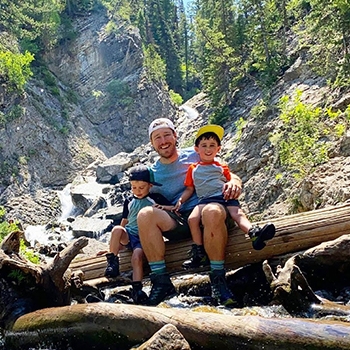
What Should My Kid Sleep On or In?
This is easily the biggest concern for most parents, but bedtime in a nylon fortress doesn’t have to be stressful.
Younger Than 1
Phil & Teds® makes travel cribs that are just 6 pounds but take a bit of effort to set up. The Guava Family Lotus folds easily into a 13-pound backpack but comes with a hefty price tag.
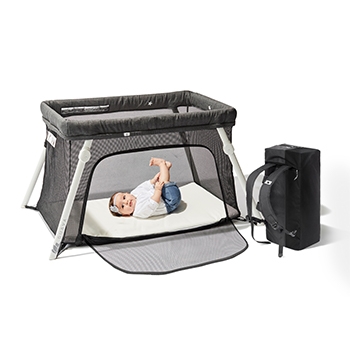
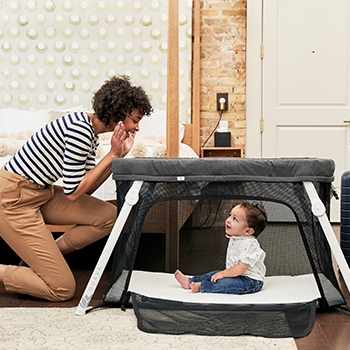
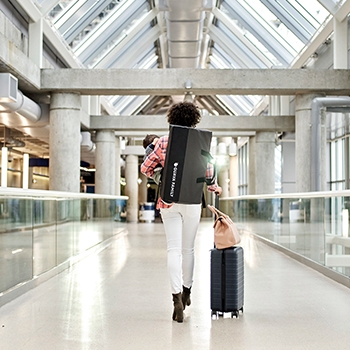
For kids 6 months and older, take a look at Little Mo and Big Mo sleeping bags by Morrison Outdoors. Bring along a closed-cell foam pad to serve as a mattress. This will insulate your kid from the cold ground while also providing a firm surface for sleep.
Ages 1-3
Once your kid hits 12 months, the PeaPod by KidCo® is a popular choice. At just over 2 pounds, it’s like a small hotel room within your tent.
Ages 4-10
For older children, it’s less about specialized gear and more about ensuring your child’s comfort and warmth. This boils down to two items: a sleeping bag and a sleeping pad. Be sure to check the temperature rating on your sleeping bag as well as the R-value on your sleeping pad. These are the two numbers that will tell you whether the gear is warm enough for your planned adventure.
What Else Should I Pack?
Packing is often the most stressful aspect for parents, so here’s a general tip: Don’t overthink it. Mentally run through what you use in your daily routine with your child and pare down items to the essential categories: food, clothing, shelter, sleep, hygiene and first aid.
If it helps, start by writing out a long list of everything you use in a day, then delete everything that doesn’t relate to these six categories. That includes toys – not essential. Mother Nature has better stuff anyway!
First aid may include a few extras that you don’t use on a typical day, such as baby or children’s Tylenol®, Neosporin® and bandages.
Your kids can rewear clothing the same way you do on these types of trips. Resist the urge to overpack (you won’t have space). It’s more important to bring clothing options for a variety of situations – cold, rain – than to bring a zillion T-shirt changes.
An exception: Consider what extras you need in case of accidents. “Don’t forget extra underwear,” says mom Sarah Lamagna, an ecologist and freelance writer in the outdoor industry. Even if your kid is bathroom trained, “the trail can throw a wrench in things,” she says. “Just bring the extra.”
What’s the Bathroom Situation?
Pooping in the woods: We all do it when we’re out there, so let’s talk about it.
If your kid is still in diapers, bad news: A full diaper can weigh up to 2 pounds. However, they aren’t biodegradable, so you can’t leave them behind in the wilderness and must pack them out in a leakproof bag.
For a one-night trip, I recommend using disposables even though they do add weight. They hold more moisture, which means less worry about leakage. However, cloth diapers may be worth considering once your family graduates to multi-night trips. They don’t hold as much fluid, but they can be boiled and cleaned while your baby sits naked and happy in the sunshine.
If your child is bathroom trained (or working on it), begin teaching them about cat holes. Per Leave No Trace™ guidance, these poop holes should be at least 6 to 8 inches deep, 4 to 6 inches wide, and at least 200 feet from water, trails or camp.
These steps ensure your waste stays out of water systems and other natural ecosystems. With kids, however, poop doesn’t always happen when you plan for it. I recommend bringing a few plastic dog bags, just like what you’d use to pick up your pet’s waste at the dog park. If your child can’t hold it and drops a gift where it shouldn’t be, just pick it up in the bag and pack it out with the rest of your trash.
Above all else, don’t stress the little things – bathroom-related or not – when you’re backpacking with kids. Late bedtimes, trail temper tantrums and scraped knees are all part of the experience. So are beautiful scenery, summer sunshine and family bonding. In the end, those are the things you’ll remember.
